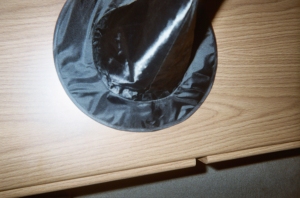Hats off to teachers…it’s time for Mid-Week Focus!
Mid-Week Focus is all about quick and easy ways to approach teaching to keep kids on task in any instructional setting.
Let’s share insight and practical ideas.
Let’s blend fun with function, and LET’S ENCOURAGE KIDS TO USE THEIR NATURAL CURIOSITY TO INVESTIGATE, DISCOVER, LEARN!
What’s under the magic hat today?
Surprises…for your students and for you! Read on…
One of the best ways to encourage curiosity in children is to model this important characteristic.
Beth Schetter, a fourth/fifth grade teacher shown in my blog pic below, is a curious teacher. She’s always looking for ways to enhance her instructional techniques and assist students with academic challenges.
As you can see, Beth has posted the words curious and smart on the whiteboard behind her desk.
Posting word prompts is a simple but effective attentionology trick.
Beth uses these and other prominently posted words to:
1) encourage students to be curious…to read MORE, write MORE, investigate and discover MORE in every subject they study.
2) help students make the connection between being curious and becoming smart.
Quick questions catch kids’ attention and encourage curiosity. I’m guessing that you use quick questions like I do.
For example, I’m planning to begin an upcoming writing lesson by holding the stuffed animal with the book you see in my blog pic here. I’ll ask the class, “What’s wacky about gorillas?”
Hands will fly with answers and more questions.
Curiosity will be off and running, leading to a writing activity about the students’ favorite wacky animals they know.
Encouraging curiosity also helps spark student interest in research. About those wacky animals…I’ll suggest to the class that we read MORE about wacky wildlife.
Ever thought about this…WORDS themselves are wacky, too.
Have you discovered like I have that kids love to learn the origin of words? For example, my students are delighted when I tell them that the English word cookie comes from the Dutch word koekje.
I briefly elaborate on the word origin, explaining that Dutch settlers in New York (US) introduced koekje into the English language. The spelling has evolved to the present word, cookie.
Quick little pickups on word derivations can lead to snap history lessons…an effective attentionology trick.
Speaking of word derivations, I got curious about where the English word, cool came from, so I did a little research and the results are your surprise under the magic hat today. Hope you enjoy the writing…
Forever Cool!
Swell has slipped away. Hip took a hop into history. Groovy lost its edge. Marvy isn’t marvelous anymore. Fab’s become foreign. Far out is way out and neat is in the bin with sweet. Phat is no longer that. Awesome is aged (but still popular). Da bombe has hit the dirt BUT cool remains forever cool.
Cool is the real deal. It’s an amazing word. As a verb in formal English, cool means to become less warm, as in take a dip to cool off.
As a noun and an adjective, cool is a description of temperature, as in the cool of early morning or a coolish day.
Cool as an idiom or slang word has behind it an entire evolution revolution!
- The slang word, cool, can be traced as far back as Beowulf’s middle English meaning of cool as a description of someone calm, unexcited or unemotional.
- The older English meaning of cool was sometimes a negative expression. To be unemotional could mean to be withdrawn, depressed, lacking in warmth or unenthusiastic, as in giving or getting a cool reception.
- In the 18th century, cool as slang assumed the meaning of calm or unexcited, as in, “He’s as cool as a cucumber.”
- In the 19th century, cool continued to refer to someone who was self-assured, even impudent, as expressed in phrases such as “He’s a cool fish.”
- In the American “gangster era” of the 1920s, cooling someone off meant icing the guy, “bye-bye,” as in “He was headed for the cooler…permanently!
- As American business began to boom after World War I, cool became a slang word associated with making big bucks, as in, “That deal was worth a cool million.”
- Cool changed its tone in African-American English in the 1930s when cool became slang for something bad or wicked.
- In the 1940s, with the growing popularity of jazz in America, cool became a lasting description of something exciting, enjoyable, even exceptional as in “Man, listen to the cool beat.” Jazz great, Charlie Parker, wrote “Cool Blues” in 1947.
- Beginning in the late 1940s cool was also used to refer to something being merely satisfactory or acceptable as in “That’s cool with me,” a use that continues today.
- In the 1950s, stay cool meant be cautious, in control, unemotional. This meaning also continues today with expressions like keeping a cool head.
- In the 1960s, stay cool was written into the lyrics of the American classic, West Side Story.
- Since the 1960s people all over the world have continued to use the word cool. It has staying power. It’s an attentionology tool; cool continues to rule!
What are you curious about? What do your students tell you they’d like to know? Sometimes the shortest questions can lead to long, interesting, attention-sustaining answers…and a whole lot of learning!
Talk with you again soon,
Barbara ♥ The Lovable Poet




